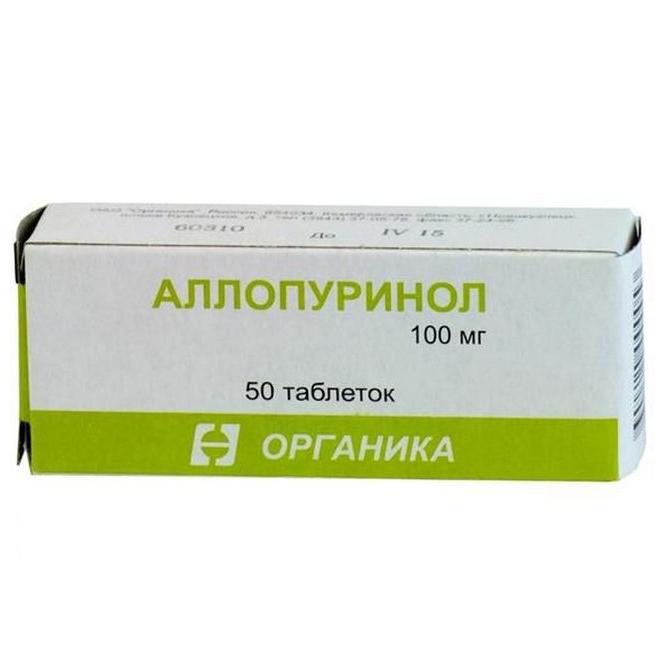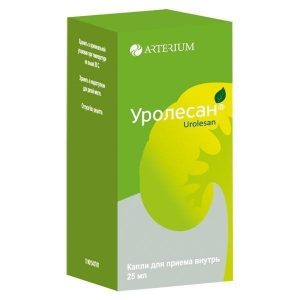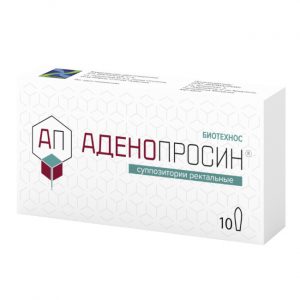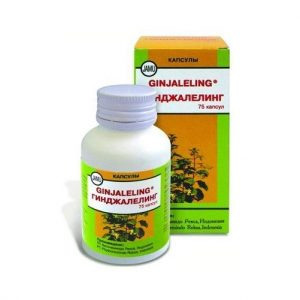Description
Release form
Tablets
Packing
50 pcs.
Pharmacological action
Hypuricemia, antigout. Means that violate the synthesis of uric acid.
Allopurinol is a structural analogue of hypoxanthine. It inhibits the xanthine oxidase enzyme, which is involved in the conversion of hypoxanthine to xanthine and xanthine to uric acid. This is due to a decrease in the concentration of uric acid and its salts in body fluids and urine, which helps to dissolve existing urate deposits and prevents their formation in tissues and kidneys. When taking allopurinol, urinary excretion of hypoxanthine and xanthine increases.
Contraindications
Hypersensitivity, severe renal failure, pregnancy, and breastfeeding.
Use during pregnancy and lactation
Allopurinol is contraindicated in pregnancy and lactation.
Special instructions
Allopurinol should be used with caution in case of impaired liver and / or kidney function (in both cases, a dose reduction is necessary), hypothyroidism. In the initial period of the course of therapy with allopurinol, a systematic assessment of liver function indicators is necessary.
During the treatment with allopurinol, the daily amount of fluid consumed should be at least 2 liters (under the control of diuresis).
An exacerbation of the disease may occur at the beginning of a course of treatment for gout. For prevention, you can use NSAIDs or colchicine (0.5 mg 3 times / day). It should be borne in mind that with adequate treatment with allopurinol, dissolution of large urate stones in the renal pelvis and their subsequent entry into the ureter is possible.
Asymptomatic hyperuricemia is not an indication for the use of allopurinol.
In children, it is used only for malignant neoplasms (especially leukemia), as well as for some enzymatic disorders (Lesch-Nyhen syndrome).
To correct hyperuricemia in patients with tumor diseases, allopurinol is recommended before treatment with cytostatics. In such cases, the minimum effective dose should be used. In addition, in order to reduce the risk of xanthine deposition in the urinary tract, measures must be taken to maintain optimal urine output and alkalization. With the simultaneous use of allopurinol and cytostatics, more frequent monitoring of the peripheral blood picture is necessary.
Alcohol is not allowed during allopurinol.
Effect on the ability to drive vehicles and control mechanisms
Use with caution in patients whose activities require a high concentration of attention and rapid psychomotor reactions.
Composition
1 tablet contains 100 mg of allopurinol
auxiliary ingredients: lactose, starch, polyvidone, talc, magnesium stearate, sodium amylopectin glycolate.
Dosage and administration
Start with 100 mg / day, once, then the dose is gradually increased. If side effects from the gastrointestinal tract occur at a dose of 300 mg per day, fractional administration is possible.
Inside, after a meal.
Adults: 100-200 mg per day, with moderate severity – 300-600 mg per day, with serious condition -700-900 mg per day. The frequency of administration is 2-4 times / day after meals.
For children: up to 15 years -10-20mg / kg per day (up to 400mg per day maximum) With severe renal failure, 100mg per day or 100mg with an interval of more than 1 day.
The lowest dose is recommended for older patients.
Side effects
From the cardiovascular system: in isolated cases – arterial hypertension, bradycardia.
From the digestive system: dyspeptic symptoms (including nausea, vomiting), diarrhea, a transient increase in serum transaminase activity are rare – hepatitis in rare cases – stomatitis, impaired liver function (transient increase in transaminase and alkaline phosphatase activity), steatorrhea.
From the side of the central nervous system and peripheral nervous system: in isolated cases – weakness, increased fatigue, headache, dizziness, ataxia, drowsiness, depression, coma, paresis, paresthesia, convulsions, neuropathy, visual impairment, cataracts, changes in the optic papilla, disorders taste sensations.
From the hemopoietic system: in some cases – thrombocytopenia, agranulocytosis and aplastic anemia, leukopenia (most likely in patients with impaired renal function).
From the urinary system: rarely – interstitial nephritis in isolated cases – edema, uremia, hematuria.
From the endocrine system: in isolated cases – infertility, impotence, gynecomastia, diabetes mellitus.
From the side of metabolism: in isolated cases – hyperlipidemia.
Allergic reactions: skin rash, hyperemia, itching in some cases – angioimmunoblastic lymphadenopathy, arthralgia, fever, eosinophilia, fever, Stevens-Johnson syndrome, Lyell’s syndrome.
Dermatological reactions: in isolated cases – furunculosis, alopecia, hair bleaching.
Drug interaction
With the simultaneous use of allopurinol enhances the effects of coumarin anticoagulants, adenine arabinoside, as well as hypoglycemic drugs (especially with impaired renal function).
Uricosuric agents and salicylates in high doses reduce the activity of allopurinol.
With the simultaneous use of allopurinol and cytostatics, a myelotoxic effect is more often manifested than with separate use.
With the simultaneous use of allopurinol and azathioprine or mercaptopurine, cumulation of the latter in the body is observed, because in connection with the inhibition of xanthine oxidase activity by allopurinol for the biotransformation of drugs, their metabolism and elimination slows down.
Overdose
Symptoms: nausea, vomiting, diarrhea, dizziness, oliguria.
Treatment: forced diuresis, hemo-and peritoneal dialysis.
Storage Conditions
Store at room temperature.
active substance
Allopurinol
Terms leave through pharmacies
In retseptu
PMA pills
Prescription
For children prescribed by a doctor, For adults 3 years old
Indications
Indications
Urolithiasis, Gout




